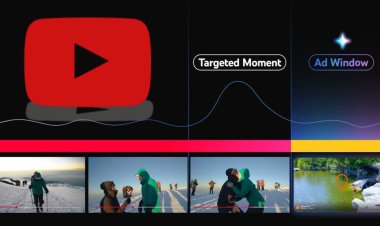Get popular or leave? Why businesses need to reconsider their strategy

Once upon a time, all that a marketer would desire was a clever advertising campaign that connected with the general public and built brand recognition and value. It's a different tale now. Instead of focusing on originality, agencies have been focusing on meeting client requests for "viral" advertising.
To the dismay of agencies, the expectations for virality have grown more and more adamant in recent years as a result of technology improvements, including better tools for scaling up campaigns and effective media to reach audiences online.
Agencies are entrusted with devising a foolproof strategy to make the campaign go viral in the quest to attract as many viewers as possible with a viral campaign. But is it possible to foresee virality?
Recently, firms from several industries hailed the Zomato-Blinkit billboard campaign as the gold standard for viral marketing initiatives. The campaign was extremely viral due to its shareability and humor. Was Zomato aware of a mysterious algorithm that was used to make sure the advertising went viral? No chance. Can any ad firm worth their salt create a viral ad with just the right amount of creativity?
First off, let's be absolutely clear that creativity is a tool, a weapon, and a solution, said Russell Burrett, Chief Experience Officer at TBWA India. Virality is a result. It is impossible to deliver truly viral material on demand.But there are a few components that can be added to the recipe to make an idea popular.
Get to where the people are, he continued. By using individuals who will have cultural cache, this truly implies discussing topics that are culturally pertinent. In order to increase that bit, try to determine why people will share this material. While there is still an outcome, it might not go viral, but these ingredients can undoubtedly help.
Ex-Dentsu Group Chief Creative Officer Ajay Gehlaut emphasized the ridiculousness of such expectations from clients. Making a viral video has been a popular trend ever since the term "viral" was used. You cannot create a video that goes viral, but you can create a video and hope it does. You can create a strong piece of communication, but you cannot hope for virality.
Shivil Gupta, a creative and strategy consultant, echoed this sentiment when he said, "Now, everyone wants to be in the headlines at all costs. Yet we must recognize that when it comes to a brand, the customer always identifies with the quality of the product. It's risky to ask creative people to come up with ideas while keeping the potential for virality in mind. Keep in mind that there is a fine line between fame and success.
Demands for virality, according to Azazul Haque, Chief Content Officer of Media.Monks, frequently act against the interests of the companies. "Creativity in advertising has a goal; it is intentional communication used to raise brand awareness or boost revenue. When brands mention virality, everything else is put on hold. Although it doesn't hinder creativity as much, it hinders the goal. He laments that people frequently declare that they have forgotten their goals and just want anything to happen.
"I believe that this compromises the marketing communication goal more than it compromises creativity because you will need to be contextual and topical in order for it to go viral. In my opinion, brands often claim they want to create something viral even though they have nothing to say. The quest for virality, in my opinion, causes the brand to lose its bearings.
In spite of the fact that virality is a byproduct of creativity, strategy, media, and many other things, companies shouldn't put pressure on creatives to come up with a viral campaign in order for campaigns to reach the target audience and become part of dinner table conversations. Brands are advised by experts to pursue creativity rather than compete in the rat race.
The term "viral" is rather vague, according to Aalap Desai, CCO of Dentsu Creative West and Dentsu Creative Experience in India. In my opinion, people use that as a crutch to make up for the portions of the brief they are unable to address. It cannot be fully anticipated or predicted. You can only hope that what you create goes viral.
"If we produce something with craft in it, it will be shared and valued, and that much is certain. Craft can refer to a concept or a method of production. But if the concept is well-made, they like it. It resembles Bollywood a lot. We don't support films like Shehzada, but we really like ones like Kantara. Did the makers of Shehzada want it to be a box office dud? No. However, did they produce a dud? Yes. Advertising follows the same rules. Let your imagination and craft room flourish, and the viral criterion will be met as a result. It isn't a good place to start.
Because data technology wasn't readily available in the past, brands relied on different touch points, like an increase in sales, to gauge the success of their campaigns. The question of whether virality actually boosts sales, which is the ultimate goal of every firm, is still up for debate. It may help to raise consumer awareness.

 Sumit Rawat
Sumit Rawat 










